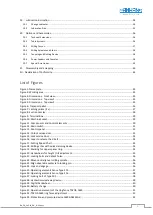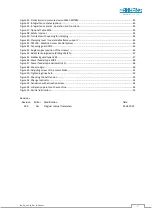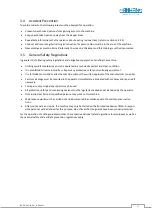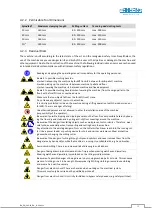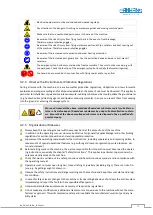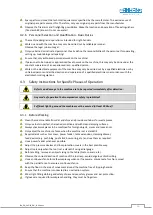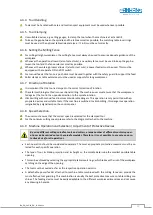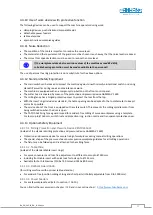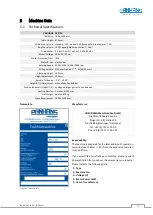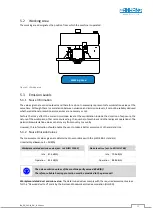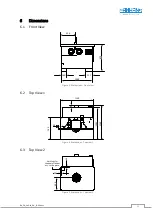
BA_PH_245-10_EN_13-22.docx
17
4.3.2
Normal Operation
Guards:
Take measures to ensure that the machine can only be operated in a safe and functional
condition. Only operate the machine when all guards and safety-related devices such as
- detachable guards (e.g. tool covers and fence covers),
- emergency stop system, sound insulation, suction device etc.
are present and in working order.
Workpiece:
Before machining, inspect the workpiece for foreign inclusions, knots, twists, objects
and other irregularities.
Working area:
An obstacle-free work area around the machine is essential for safe operation.
The floor should be level, well maintained and free from debris such as chips and cut-off workpieces.
Rotation speed:
The speed must correspond to the milling cutter and the respective operation.
The maximum speed indicated on the tool must not be exceeded. If a speed range is indicated on the
milling cutter, this must be adhered to by not going above or below the speed range stated.
Cutting area during operation:
Never attempt to remove splinters, chips or other parts from the cutting
area while the machine is running! Never remove splinters and chips by hand!
- Cover the milling cutters before the fence by means of a protective device
- Clamp milling cutters as deeply as possible
- Adapt the table opening to the tool diameter with insert rings or optional Table Slide
- Place the fence halves as close as possible to the milling tool and clamp them securely
- Close the protective cover of the fence
Power feeder:
Generally adjust so that the workpiece is guided safely along the fence. Set the feeder
at an angle of approx. 5° to the feed direction and keep the opening to the fence as small as possible.
Manual feeding:
When feeding the workpiece manually, place the hands flat on the workpiece with
closed fingers and push forward evenly.
Special tools:
For certain operating phases and operations it is necessary to use special tools
(e.g. feed device, table extensions, clamping drawer, push bar or comparable feed elements).
Single pieces / samples:
Always use all protective devices and appropriate tools!
Insert milling:
During insert milling, use optional table extensions with cross fences as well as a
Kickback guard adapted to the workpiece dimensions.
Workpieces with small cross-section:
Always use one with a push block for machining.
Short workpieces:
For short workpieces, use a workpiece holder and bridge the fence halves.
Long workpieces:
When milling, generally use feather boards and table extensions and secure the work-
piece against tipping.
Narrow grooves:
Always use a suitable grooving cutter (no circular saw blades).
Milling narrow cross sides:
Generally feed workpiece with push block.
Curved or round workpieces:
Use special suction bonnet when milling with a thrust ring or ring fence
guard.
Extraction:
The machine must be connected to an effective extraction system. This requires a flow velocity
of at least 20 m/s for dry chips and 28 m/s for moist chips (moist 18 % or more).
Machine condition:
Check the machine for externally visible damage and defects at least once per shift!
Any changes that have occurred (including those in the operating behaviour) must be reported immedi-
ately to the responsible office or person! If necessary, stop and secure the machine immediately!
Work interruptions:
Switch off the machine even during short interruptions! Never leave the machine
running unattended!



